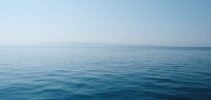Last Friday (26), two weeks of negotiations at the United Nations ended and no agreement was reached to protect the biodiversity on the high seas.
ADVERTISING
O Curto News talked to Julia Schütz Veiga – member of the Brazilian representation at the intergovernmental conference at the UN (BBNJ) – regarding the obstacles that prevented the creation of the international agreement on the conservation and sustainable use of marine biodiversity present in international areas.
“the main obstacles to concluding the BBNJ are based on the lack of homogenization of the agreement’s basic concepts. For example, states in the global North refuse to accept the inclusion of a definition for 'digital sequence information' (or 'genetic sequence data'), as well as a standard that allows access and use of digital information from marine genetic resources”.
“They forget that the development of marine technology is currently based on digital information. As the transfer of marine technology is identified as a transversal and indispensable element for the implementation of the BBNJ, there is no way to advance the discussions without this access being reflected in the agreement”.
ADVERTISING
Júlia pointed out that – only after strong pressure from developing countries – the States of the global North (the most developed) accepted the inclusion of a provision in the agreement that aims to share monetary benefits arising from the commercialization of products that contain, in their composition, composition, marine genetic resources of international marine areas.
“However, the amount they offer falls far short of what the marine biotechnology market generates (OECD studies identify figures in the billions)”.
“In short, much more than creating high-standard standards for the conservation and sustainable use of marine biodiversity, we need to help developing States implement such legislation, observing their duties and enjoying their rights”, he concluded.
ADVERTISING
The researcher explained Brazil's proposals for a future agreement, listen here:
Júlia Schütz Veiga is a PhD student in Law at NOVA School of Law (Portugal) and has a master's degree in Maritime Law and Economics from the same institution. She is also a specialist in International Law at UFRGS (Brazil) and a researcher at the Center for Studies in Maritime Law 'Vicente Marotta Rangel' at the University of São Paulo (CEDMAR / USP).
(🚥): may require registration and/or signature
(🇬🇧): content in English
(*): content in other languages is translated by Google Tradutor
ADVERTISING




